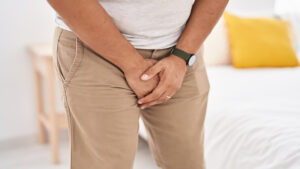Erectile dysfunction (ED) can have a significant impact on men’s sexual experiences and overall quality of life, especially as they navigate the changing circumstances of time. Here’s how ED and sexual experiences may evolve over different life stages:
- Younger Age:
- For younger men, experiencing ED can be particularly distressing and unexpected. It may be perceived as a challenge to their masculinity and sexual competence.
- ED in younger men is often associated with psychological factors such as performance anxiety, stress, relationship issues, or excessive use of pornography.
- Addressing underlying psychological factors through therapy or counseling, along with lifestyle changes, may be effective in managing ED in younger men.
- Middle Age:
- Middle-aged men may start experiencing ED more frequently due to a combination of physiological changes, such as decreased testosterone levels, and lifestyle factors like stress, unhealthy diet, and lack of exercise.
- Relationship dynamics may also play a significant role during this stage, as men juggle career responsibilities, family obligations, and changes in their intimate relationships.
- Seeking medical advice and exploring treatment options become more common as men in this age group become more aware of the impact of ED on their overall well-being and relationships.
- Older Age:
- As men age further, the prevalence of ED tends to increase due to age-related changes in blood flow, nerve function, and hormone levels.
- Despite the challenges posed by ED, many older men continue to engage in sexual activity and intimacy, albeit with adaptations and adjustments.
- Older men may be more likely to seek medical treatment for ED, given the higher prevalence and potential impact on their quality of life.
- They may also prioritize emotional intimacy and connection over penetrative sex, finding fulfillment in alternative forms of sexual expression and intimacy.
- Partner Dynamics:
- Partner dynamics play a crucial role in how men experience and cope with ED. Supportive and understanding partners can help alleviate feelings of shame and embarrassment associated with ED.
- Open communication and mutual understanding between partners are essential for navigating the challenges of ED and finding alternative ways to maintain intimacy and satisfaction.
- Treatment and Coping Strategies:
- Treatment options for ED, including medication, lifestyle changes, counseling, and devices such as vacuum erection devices or penile implants, can help men manage the condition and regain confidence in their sexual abilities.
- Developing coping strategies, such as focusing on pleasure rather than performance, exploring non-penetrative sexual activities, and enhancing emotional intimacy, can also contribute to a fulfilling sex life despite ED.
Overall, while ED may present challenges at different stages of life, it’s important for men to recognize that they are not alone in their experiences and that there are various strategies and resources available to help them maintain satisfying and fulfilling sexual relationships. Seeking support from healthcare professionals, partners, and support groups can be invaluable in navigating the complexities of ED and sexuality over time.
Treatment:
Erectile dysfunction (ED) can significantly impact the sexual health and quality of life of men, and the use of devices is one approach to managing this condition. Here are some common devices used in the treatment of ED:
- Vacuum Erection Devices (VEDs):
- VEDs, also known as penis pumps, are non-invasive devices that create a vacuum around the penis, drawing blood into the erectile tissues to produce an erection.
- The device typically consists of a cylinder that fits over the penis, a pump to create the vacuum, and a constriction ring or band that is placed around the base of the penis to maintain the erection.
- VEDs are often recommended as a first-line treatment for ED, particularly for men who cannot tolerate or do not respond to medication treatments.
- Penile Implants:
- Penile implants are surgical devices that are implanted into the penis to enable erections in men with severe or treatment-resistant ED.
- There are two main types of penile implants: inflatable implants and malleable (semi-rigid) implants.
- Inflatable implants consist of inflatable cylinders that are implanted into the penis, along with a pump placed in the scrotum and a reservoir of fluid implanted in the abdomen. When the pump is activated, the cylinders fill with fluid, creating an erection.
- Malleable implants are semi-rigid rods that are surgically implanted into the penis, allowing it to be bent upwards for intercourse and then positioned downward when not in use.
- Penile implants are typically reserved for men who have not responded to other treatments for ED or who cannot use other treatment options due to anatomical or medical reasons.
- Penile Rings or Bands:
- Penile rings or bands are elastic devices that are placed around the base of the penis to help maintain an erection by preventing blood from flowing out of the penis.
- These devices are often used in conjunction with other treatments for ED, such as medication or vacuum erection devices, to enhance the duration and firmness of erections.
- External Penile Support Devices:
- External penile support devices, such as the Erektor or Stays-Hard device, are non-invasive devices that provide external support to the penis during intercourse.
- These devices typically consist of a ring or band that is placed around the base of the penis and a support structure that extends along the length of the penis to provide additional rigidity.
It’s essential for men considering the use of devices for ED to consult with a healthcare provider to determine the most appropriate treatment approach based on their individual needs, preferences, and medical history. Additionally, proper education and training on device use are crucial to ensure safety, effectiveness, and optimal outcomes.




